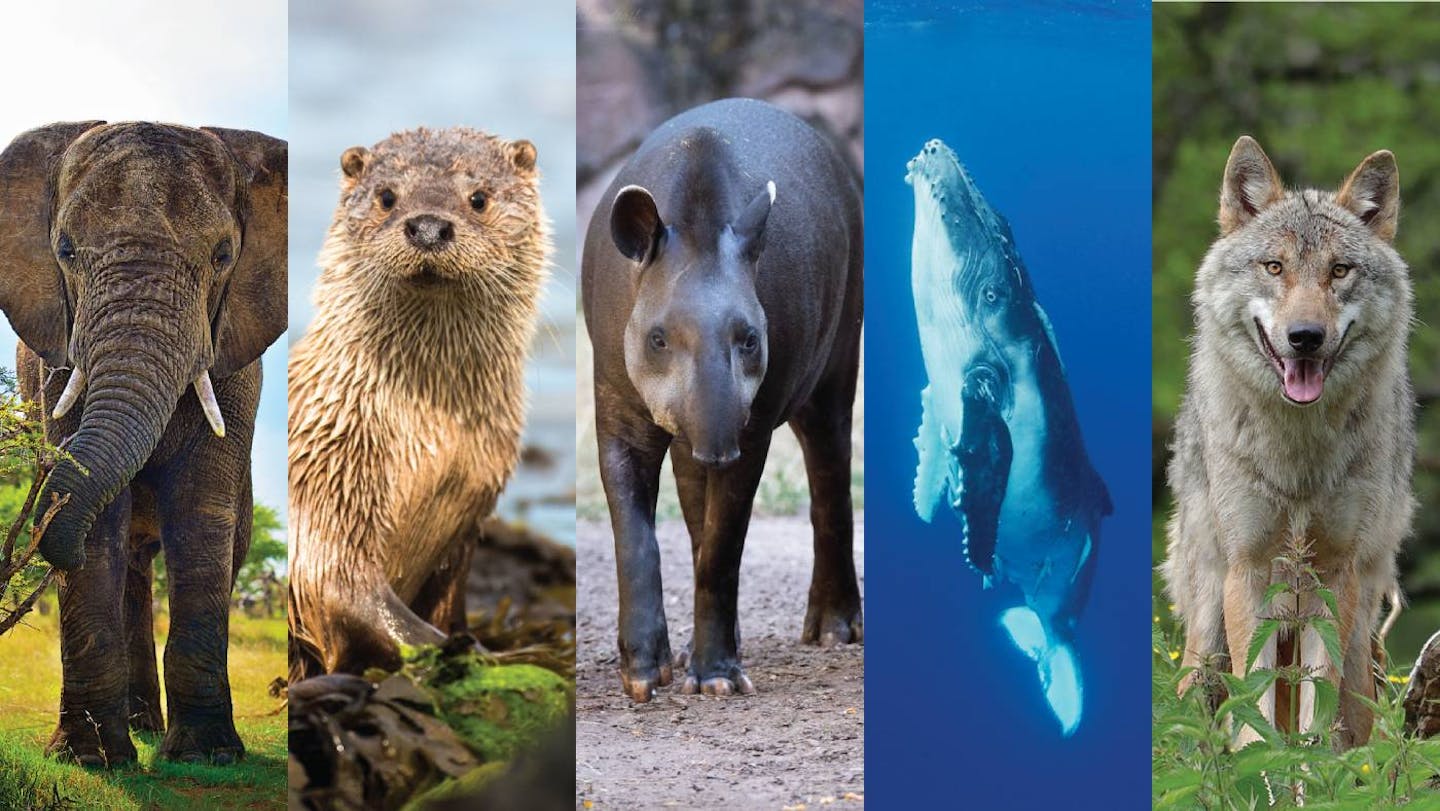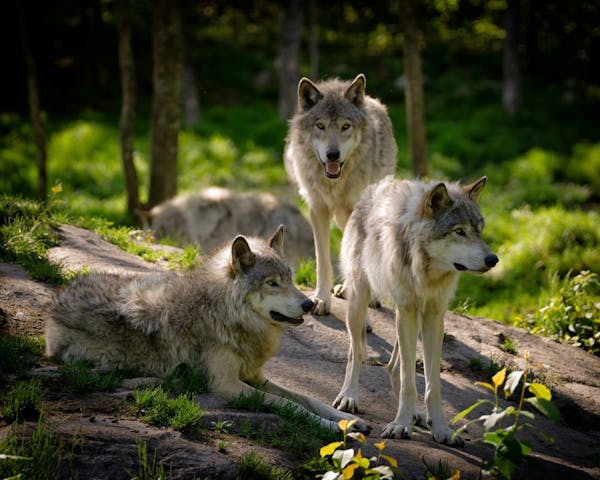Celebrating unsung climate heroes: How five animals help fight climate change
Did you know that African forest elephants, sea otters, tapirs, whales, and wolves are all essential allies in combating the climate crisis? Through their habits and diets, these five animals help their respective ecosystems remove carbon from the atmosphere and store it away. This helps to stabilize our global climate system.
When these species thrive, they can have a significant impact on the health of our planet.
African forest elephants | Gardeners of the Congo
The smallest of the three species of elephants, African forest elephants live in the Congolian rainforests. Known as ‘Gardeners of the Congo,’ they prune the jungle in their search for food. As they forage for seeds, fruit, and leaves in the lush vegetation, they stomp on fast-growing bushes, which allow for slower-growing trees to become well-established.
These trees sequester more carbon from the air than smaller, more aggressive-growing plants. So much so that each elephant aids in capturing over 9,000 tons of carbon in its lifetime. Economist Ralph Chami found that, in total, African forest elephants are providing $150 billion worth of carbon capture services every year.
Sea otters | Guardians of kelp forests
One of the most adored species on our planet, sea otters act as guardians of underwater kelp forests. Kelp forests are one the most efficient absorbers of CO2, using carbon from the atmosphere to grow leafy structures below the surface. Yet, these forests are particularly delicious if you are a sea urchin. If left unchecked, these small, spiky marine animals multiply rapidly, sweeping across the ocean floor and devouring entire stands of kelp. As keystone predators, sea otters keep these urchin populations in check.
A study found that kelp forests guarded by sea otters can absorb 12 times more carbon dioxide than those without. Sea otters provide an estimated carbon capture value of $200-400 million annually.
Tapirs | Rainforest regenerators
With a body similar to a pig and a short, elephant-like trunk, tapirs may seem odd at first glance, but they are essential to helping degraded rainforests spring back to life. Tapirs eat a wide variety of fruit and leave behind seeds in their droppings, which then germinate and grow.
A study found that tapirs spread three times more seeds in degraded areas than in forests. This natural regeneration is among the cheapest and most feasible ways to restore tropical forests.
Researchers identified 24 different species of seeds in tapir droppings, many of which eventually become large trees within forests, absorbing additional carbon to help slow the warming of the planet.
Whales | Deep sea climate solutions
As Earth’s largest mammal, whales absorb an average of 33 tons of carbon each throughout their lifetimes. When they die, their carcasses fall to the bottom of the ocean and remain there for centuries, keeping that stored carbon out of the atmosphere.
Even their excrement goes to work! Whale droppings act as a fertilizer for phytoplankton, which pulls ten gigatons of carbon from the atmosphere into the deep ocean each year.
Unfortunately, whale populations have dramatically declined due to pollution and hunting. If whale populations were allowed to return to around 4-5 million, a massive 1.7 billion tons of carbon could be captured each year.
Wolves | Rebalancing Yellowstone National Park
Nowhere is the importance of wolves more evident than in Yellowstone National Park. In 1926, as part of a policy to eliminate all predators, the last wolf pack in Yellowstone National Park was eliminated by employees.
The entire ecosystem fell out of balance. Elk populations exploded, causing overgrazing of willows and aspens. Without those trees, songbirds began to disappear. Beavers could no longer build their dams as riverbanks eroded, and water temperatures rose until they were too high for cold water fish.
In 1995, 14 wolves were brought back. Deer and elk populations responded immediately, trees rebounded, riverbanks stabilized, and birds returned along with beavers, eagles, foxes, and badgers. Scientists celebrate it as one of the greatest reintroduction stories ever.
These five species are just a few examples of how wildlife populations are vital in keeping our global climate system in balance. Protecting and rewilding Earth’s wildlife is key to solving the climate crisis.
Watch more Wild Carbon videos

.jpg?auto=compress%2Cformat&h=600&w=600)


